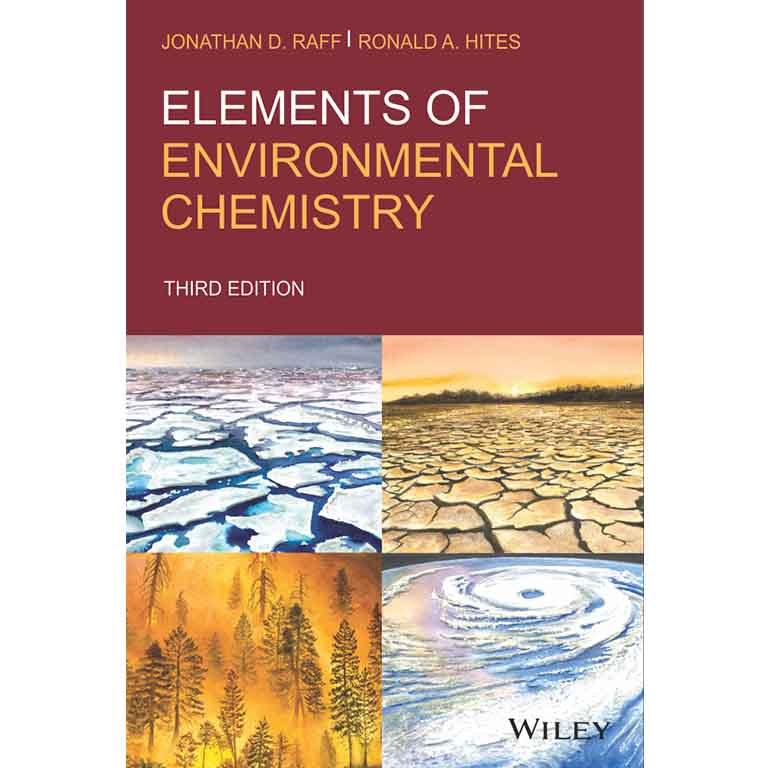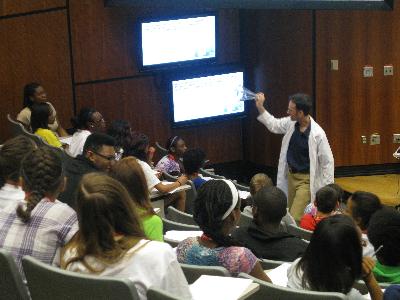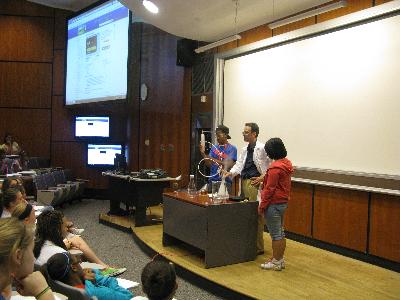Raff, J. D. and Hites R. A. Elements of Environmental Chemistry, 3rd ed. 2020, Wiley, Hoboken, NJ, pp. 288 ISBN-13: 978-1119434870
A solution manual is available for instructors. Please contact Prof. Raff for more details.

Raff, J. D. and Hites R. A. Elements of Environmental Chemistry, 3rd ed. 2020, Wiley, Hoboken, NJ, pp. 288 ISBN-13: 978-1119434870
A solution manual is available for instructors. Please contact Prof. Raff for more details.
This is an introductory graduate-level course in environmental chemistry that provides first year graduate students with the tools they will need to understand topics in atmospheric and aquatic chemistry, as well as providing an understanding of a wide variety of pollutants and their fates in the environment. Topics include: Simple steady-state and non-steady state mass balance models, chemical kinetics, the ozone hole, air pollution in the lower atmosphere, the chemistry of climate change, CO2 equilibria, vapor pressure, solubility, and partitioning processes, categories of toxic environmental chemicals (e.g., pesticides, industrial pollutants, heavy metals).
This is a course for graduate and advanced undergraduate students that will cover the physical and chemical principles that help us understand the fates of organic chemicals in the environment and describe the tools we use to study them. Both organic pollutants and naturally occurring chemicals that may be found in soil, aerosols, water, gas-phase, and biota will be discussed. Physical and chemical properties such as vapor pressure, solubility, and partitioning processes will be discussed and the methods used to estimate and measure these properties will be described. Chemical reactions that transform chemicals on terrestrial and atmospheric surfaces and in aqueous phases will also be introduced (e.g., photolysis, reactions with radicals, nucleophilic reactions, condensation, hydrolysis reactions, and redox reactions). Students will learn how to identify a chemical's most relevant fate process(es) and how molecular structure governs its behavior and transport in the environment. In addition, the course will introduce basics of the most important analytical techniques (i.e., mass spectrometric, chromatographic, spectroscopic, and sample collection and extraction methods) used to study and quantify trace organic compounds in the environment. Emphasis will be placed on real world examples (e.g., from oil spills and industrial accidents to waste disposal problems and processing of biogenic chemicals) and the latest scholarly literature in the field.
The Raff Lab is committed to communicating the results of our research to the public and increasing literacy in the chemical and environmental sciences. Please contact Professor Raff if you are a school teacher and would like to schedule a guest lecture or a tour of the laboratory for your class.


